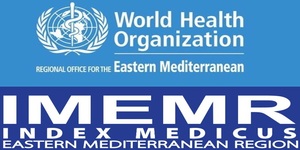Prevalence and Risk Factors for Hepatitis Cand B Viruses Infection among Hemodialysis Patients in Holy Karbala, Iraq
DOI:
https://doi.org/10.36321/kjns.vi20153.2793Keywords:
Hemodialysis, Hepatitis (B) Viruses, Hepatitis (C) Viruses, Prevalence, Risk FactorsAbstract
Background: Viral hepatitis infections are important cause of morbidity and mortality in hemodialysis (HD) patients, and its prevalence varies considerably among different areas of the world. Patients receiving maintenance HD are at higher risk for acquiring hepatitis B virus (HBV) and hepatitis C virus (HCV) infections than the general population.
Objectives: The aim of this study was to investigate the prevalence of the HBV and HCV among HD population in Holy Kerbala, as well as to identify the risk factors associated with their transmission.
Methodology: A cross-sectional study was carried out in HD center at Imam Hussein medical city in Holy Kerbala, Iraq. A total of 165 patients with end-stage renal failure who have been receiving HD therapy were involved in this study in the period of June 2014 to March 2015 in order to investigate the prevalence of HBV and HCV infection also to detect the presence of risk factors associated with their transmission among HD patients such as duration on HD therapy; family history of hepatitis, blood transfusion history; previous dialysis in another HD center; history of HBV vaccination; history of war and traumatic injury; tattoos, cupping and injecting drug user history, history of kidney transplantation and previous surgery. Blood samples were taken of all patients, then tested for the presence of both hepatitis B surface antigen (HBsAg) and antibodies of hepatitis C virus (anti-HCV). Patients were considered to be HCV positive if they had a positive test result for the presence of antibody by serologic testing (anti-HCV-positive), and patients were considered HBV positive if they had HBsAg-positive in their serum. Statistical analysis was done using SPSS version 16. p-value 0.05 was considered statistically significant.
Results: Out of one hundred and sixty five patients, one (0.6%) patient were HBsAg positive and eleven (6.6%) patients were anti-HCV sero-positive, none of the patients were infected by both HBV and HCV, this results suggest that there is a low prevalence of HCV and HBV among our patients. Longer duration of HD have a significant association with anti-HCV and HBsAg positivity at P value (0.005), history of blood transfusions, and previous dialysis in another center were significantly associated with HCV and HBV positivity at P value (0.000). Female gender, age between 41-60 years, married, urban residency, illiterate, and housewives patients were having highest prevalence of anti-HCV, and HBsAg positivity
Conclusions: Considering the outcome of this study, there is a low prevalence of HCV and HBV in HD patients in our center. The risk of acquiring HCV infection is significantly associated with increasing duration of dialysis, history of blood transfusion, and previous dialysis in another center.
Recommendations: The study recommended that the rate of viral infection can be decreased by strictly adherence to infection control measures in HD unit, regular HCV and HBV screening, also erythropoietin should be replace blood transfusion for the treatment of anemia, and reduce the dependence for the treatment outside patients center. Careful observation of preventive measures is required to improve infection control in HD center.
Downloads
Downloads
Published
How to Cite
Issue
Section
License
Copyright (c) 2022 Hassan Abdullah Athbi Nabeel Abdulrazaq Jasim

This work is licensed under a Creative Commons Attribution 4.0 International License.













